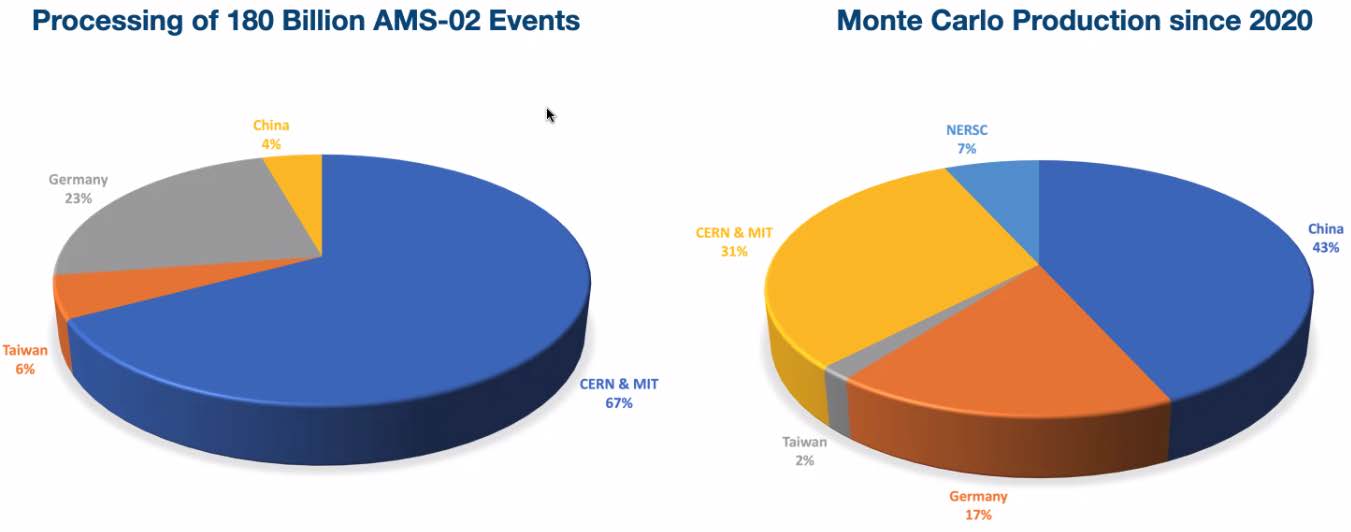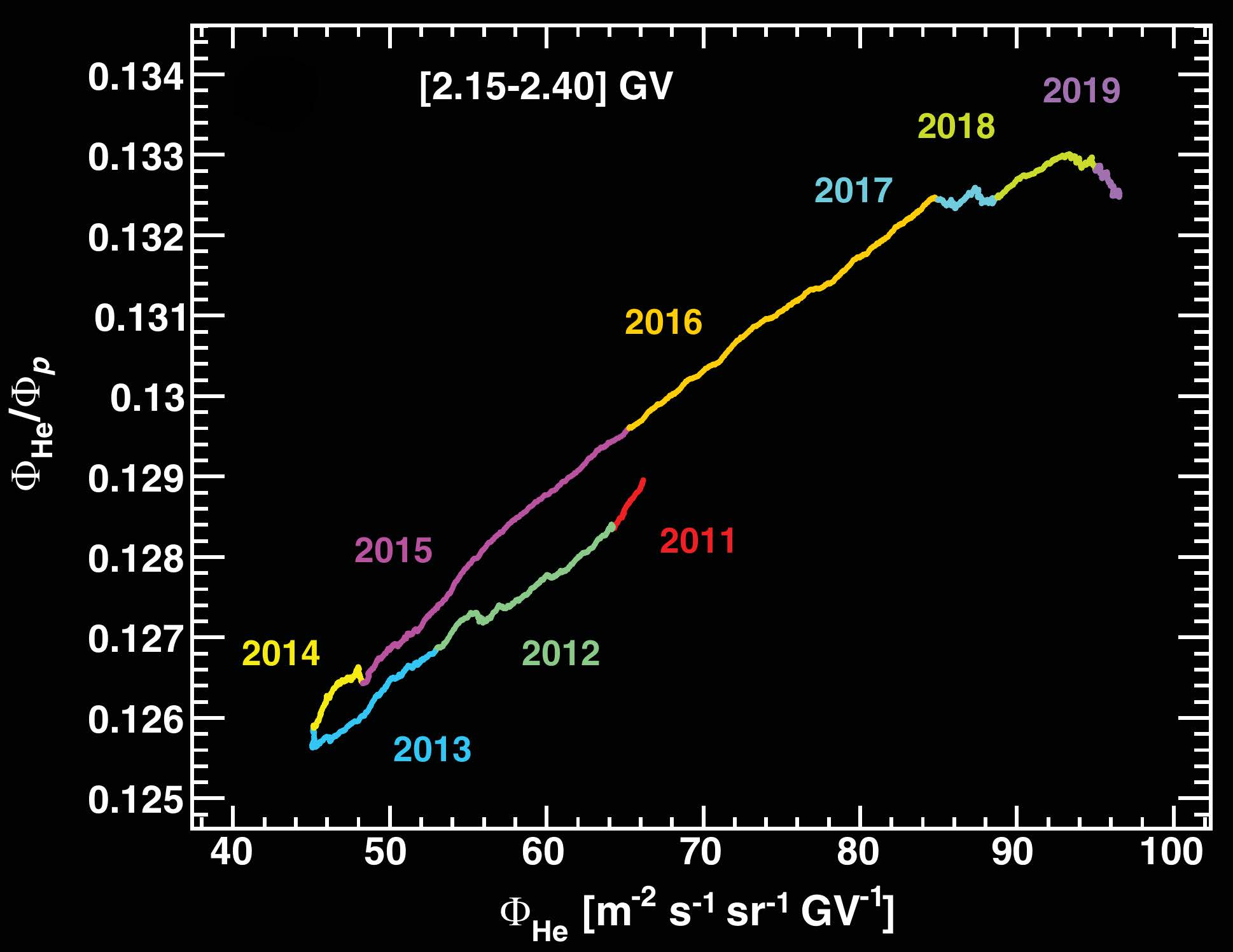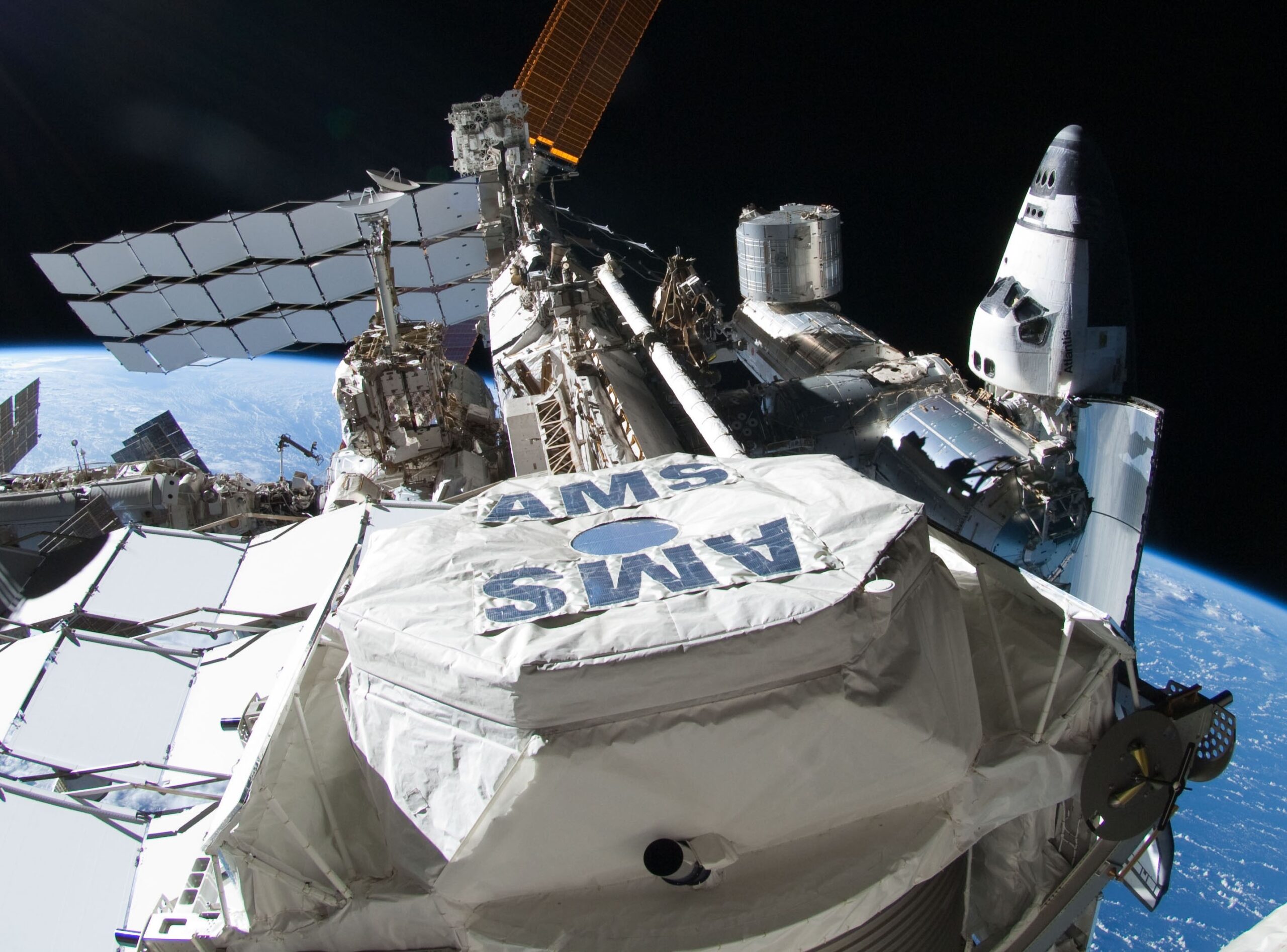Project
Cosmic-Ray Physics With the Ams Experiment on the International Space Station
The Alpha Magnetic Spectrometer (AMS) is a detector designed for precision spectroscopy of cosmic rays that was installed on the International Space Station (ISS) in May 2011 (Fig. 3). With dimensions of 5 × 4 × 3m3 and a weight of 7.5 tons, AMS is the largest cosmic-ray spectrometer ever built. Its construction began in 1995, and a successful prototype flight aboard the Space Shuttle Discovery proved the feasibility of the detector concept in 1998. Led by Nobel laureate Professor Samuel Ting from MIT, AMS has been constructed and is now operated by an international collaboration of more than 200 scientists and engineers, from Europe, America and Asia. The overall construction costs, including the flight of AMS to the Space Station aboard Space Shuttle Endeavour, have amounted to 1.5 billion US dollars. AMS is the only magnet spectrometer in space and the largest instrument for basic research on the ISS. In Germany, RWTH Aachen has been strongly involved in the AMS project since its inception.
One of the main components of AMS, the transition radiation detector (TRD), has been designed and constructed by the I. Physikalisches Institut B under the direction of Professor Stefan Schael. Today, the Aachen group, comprising 20 scientists and students, plays a major role in the analysis of the data gathered by AMS and in the operation and calibration of the instrument.
Since their discovery in 1912, cosmic rays have held many surprises in stock for us, from the discovery of new elementary particles to the most violent processes taking place in the Universe and accelerating cosmic rays to enormous energies. As a multi-purpose instrument for the precision spectroscopy of cosmic rays, AMS was conceived to answer fundamental questions about our Universe: What is the nature of Dark Matter? What happened to the antimatter that must have been produced in the Big Bang? Where are cosmic rays accelerated and how do they propagate through the Milky Way? Answers to these questions will have a profound impact on our understanding about the inner workings of our Universe and help advance fundamental science. In particular, the search for dark matter complements the search for new elementary particles at the Large Hadron Collider (LHC) at CERN, Geneva. AMS has recorded over 210 billion individual particle crossings (called “events”), more than all previous cosmic-ray experiments combined. The raw data volume collected is on the order of 40 TB per year. AMS employs redundant subdetectors for particle identification and for energy or momentum measurements: the TRD, an electromagnetic calorimeter (ECAL), a ring-imaging Cherenkov counter (RICH), a silicon tracker and a time-of-flight system (TOF). Before any physics analysis of the data can be performed, the information from all these subdetectors has to be pieced together and complicated reconstruction algorithms have to be run for each of them. The resulting high-level data serves as the input for physics analyses and occupies a volume of 160 TB per year of AMS flight on disk. HPC resources are vital for the processing, calibration, and analysis of this enormous dataset.
Project Details
Project term
May 1, 2022–December 1, 2023
Affiliations
RWTH Aachen University
Institute
I. Physikalisches Institut B
Project Manager
Principal Investigator
Methods
Monte Carlo simulations are an essential ingredient of the physics analyses of AMS data. The interactions of cosmic-ray particles entering AMS with the detector components are modelled together with the detector responses that convert energy depositions in the sensitive material to digitized output that has the same format as the event records stored by AMS for actual cosmic rays. The simulations are used to study reconstruction algorithms, extract effective acceptances for measurements of cosmic-ray fluxes, and determine the background levels due to misidentification or misreconstruction of particles. As shown in Fig. 1, the typical level of the German contribution to AMS computing is 20 %.
Results
Over twenty publications from the AMS collaboration have appeared in the renowned Physical Review Letters, most of which have been selected as an Editor’s suggestion. The findings have received considerable attention among astrophysicists and triggered an enormous amount of theoretical work.
The physics highlight of AMS in 2022 was the discovery that the helium flux and helium to proton flux ratio exhibit variations on multiple time scales, including periodicities changing with both time and rigidity, and of a remarkable hysteresis between the helium to proton flux ratio and the helium flux below 2.4GV (Fig. 2).
Discussion
The main focus of last year’s proposal was the search for cosmic antihelium which requires large amounts of Monte Carlo simulations for the calculation of the instrumental background. In the last computing period, we have extended our analysis to events without hits in the external tracker layers. The main discriminator in the analysis is a charge-confusion estimator based on machine learning techniques that separates signal from background. Since its shape is now well described by the Monte Carlo simulations, we can perform fits to data distributions to extract the amount of background and a potential signal contributions. Results will be presented in the doctoral thesis of Robin Sonnabend which is being finalized at the time of writing.
Additional Project Information
DFG classification: 311 Astrophysics and Astronomy
Software: Geant4, ROOT framework
Cluster: CLAIX
Publications
M. Aguilar et al., Properties of Daily Helium Fluxes, Phys. Rev. Lett. 128 (2022) 231102,
https://doi.org/10.1103/PhysRevLett.128.231102
 Figure 1: Contributions to recent AMS computing efforts by country/facility.
Figure 1: Contributions to recent AMS computing efforts by country/facility.  Figure 2: Helium to proton flux ratio as a function of the helium flux both calculated
with a moving average of length 378 days with a step of one day, below 2.4GV.
Figure 2: Helium to proton flux ratio as a function of the helium flux both calculated
with a moving average of length 378 days with a step of one day, below 2.4GV.  Figure 3: The Alpha Magnetic Spectrometer on the International Space Station.
Figure 3: The Alpha Magnetic Spectrometer on the International Space Station.